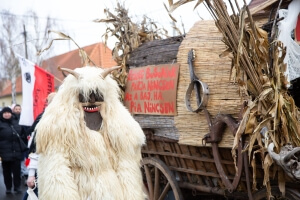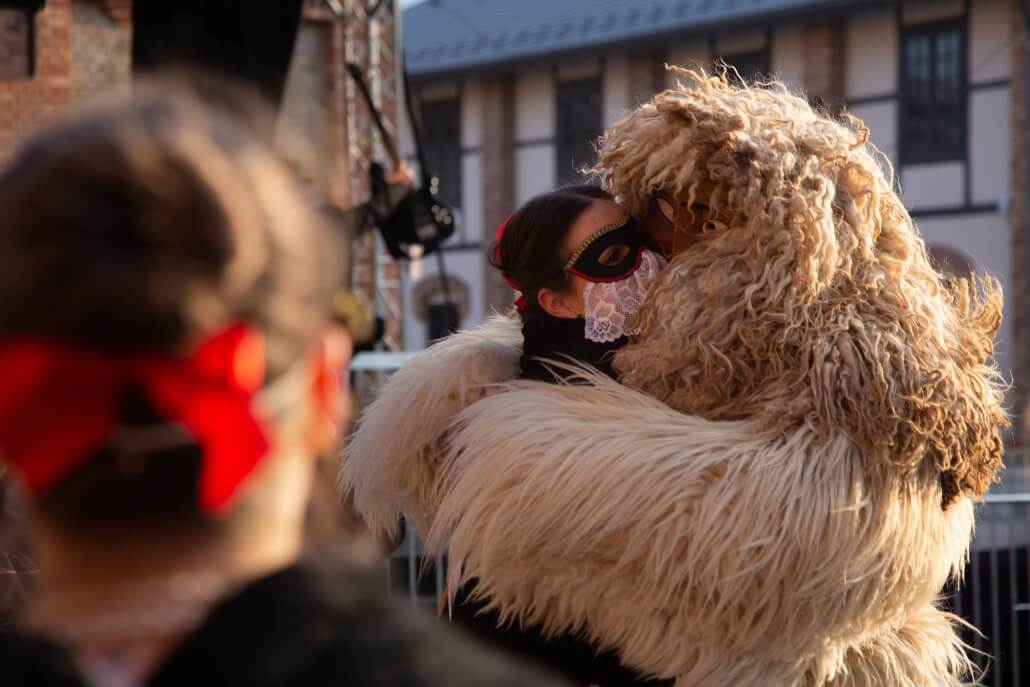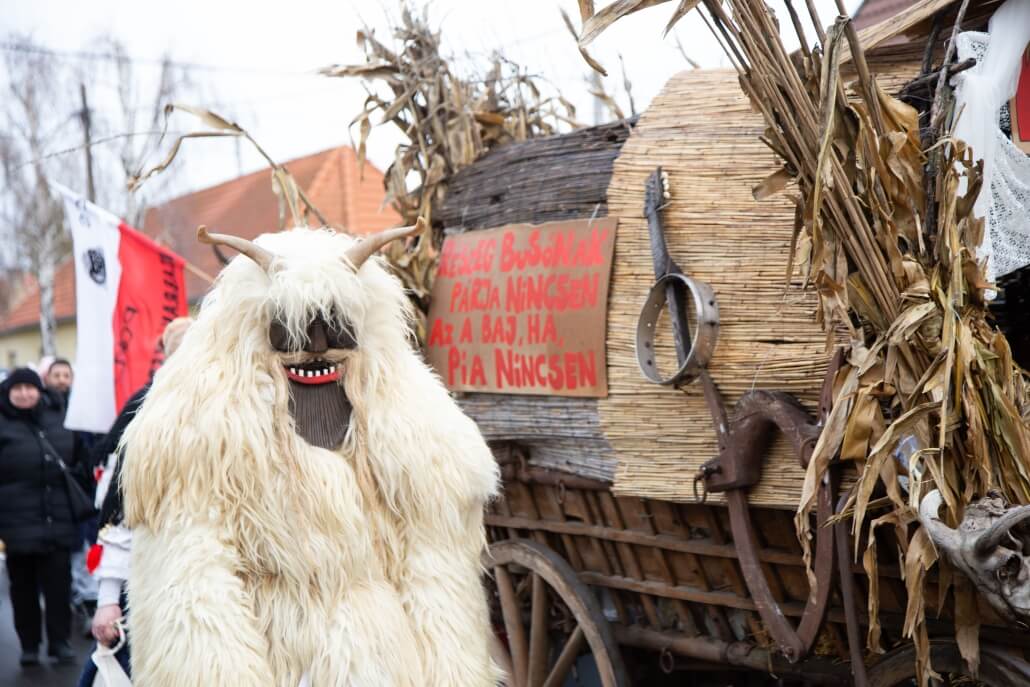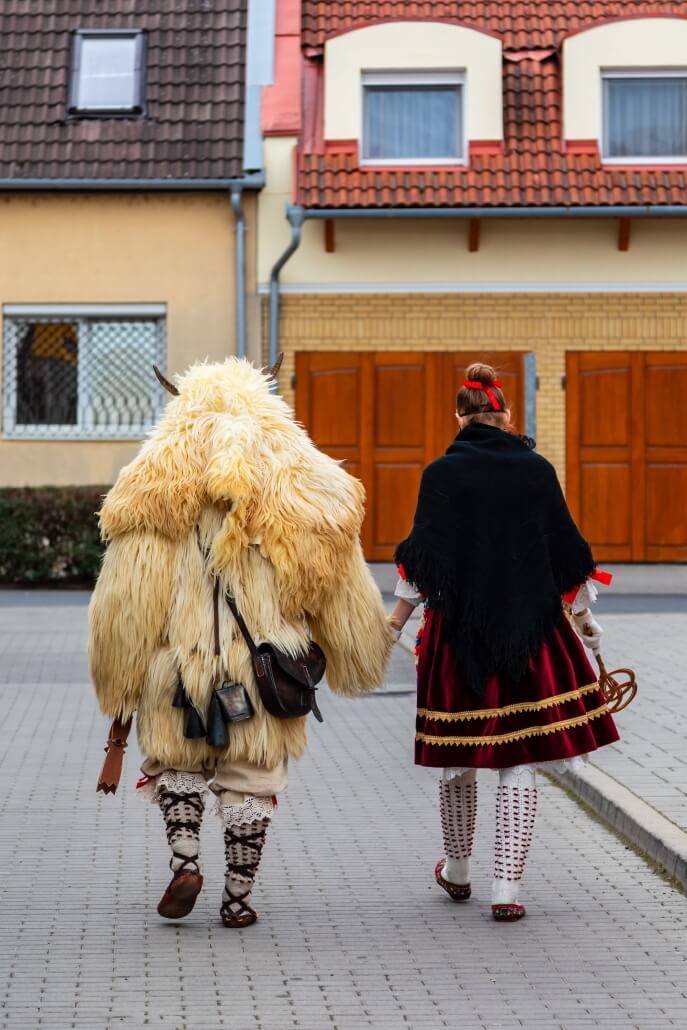
2023-02-07
The annual ritual of Busójárás dates back hundreds of years, celebrating the end of the winter and the beginning of spring. The UNESCO-recognised event lasts approximately one week in the small town of Mohács, located in southern Hungary, near the city of Pécs. This year the carnival will take place between 16-21 February. Learn more about Busójárás, one of the most famous Hungaricums.
Spring welcoming
The event of Busójárás lasts for 6 days in late February and is organised at the end of the carnival season, in Hungarian called Farsang. During the carnival, we bid farewell to winter and the Busós scare away the cold weather, while we also celebrate the spring coming, fertility and rebirth. During the event, you can choose from several programmes such as creative workshops, masquerading, folk dance and music performances, or bonfires, while you can also explore traditional Hungarian cuisines such as spicy sausages, freshly made mini doughnuts, lángos or chimney cake.

The legend of the Busós
Busós are traditionally men wearing scary costumes, unique wooden masks and woolly cloaks made of sheepskin. They like to chase around and circulate among the crowd while pulling pranks and making a big noise as a symbol of scaring winter away. Although most Busós are men, women also participate and they dress up as female Busós, or they wear costumes reminiscent of female Ottoman Turks.
But why the Ottomans exactly? A legend holds that around the 16th century, the local Šokci people (a South Slavic ethnic group from Croatia) fled from Mohács to the nearby swamps and woods to avoid the Ottoman troops. One night an old man appeared and came up with the idea of creating scary, fearsome masks and making rattling and clattering objects to scare away the Ottomans. At night, the Šokci crossed the river Danube with their boats and chased the Ottomans away. Even though the story has no real historical foundations, the legend of Busós is still very popular among the townspeople.
Mohács is a significant place in Hungarian history because two major battles were fought here. One of them was in 1526 which marks the beginning invasion of Hungary by the Ottomans. The other significant battle took place in 1687, which was the prelude to the collapse of the Ottoman Empire.

Events and traditions
In ancient times, Busós walked from house to house to express their good wishes, practice magic and, in exchange, receive drinks and food gifts. Today, most of the folk customs origin has lost but have gained with numerous other attractions. It is a real End-of-Winter festival with such events as the crossing of the Danube in large ferry boats or the sinking of Old Man Winter’s coffin in the river.
One of the main events of the carnival takes place during the penultimate night of the festival when a straw man is carried into the centre of Mohács and burned in a bonfire, while the townspeople hold hands and dance around the fire. The event also includes a children’s costume contest where children Busós can also have fun and wear carved masks. The festival usually draws about 800 Busós and 200 revellers in other types of costumes during the event.
As you can see, Busójárás is indeed one of the most famous spring carnivals in southern Hungary. We encourage you to visit Mohács and celebrate the spring coming together with the Busós, say goodbye to the cold season and welcome the new spring!

Links and sources: HungaryToday; WeLoveBudapest; Expat-press.com; UNESCO; atlasobscura.com; Mohácsi Busójárás Official






